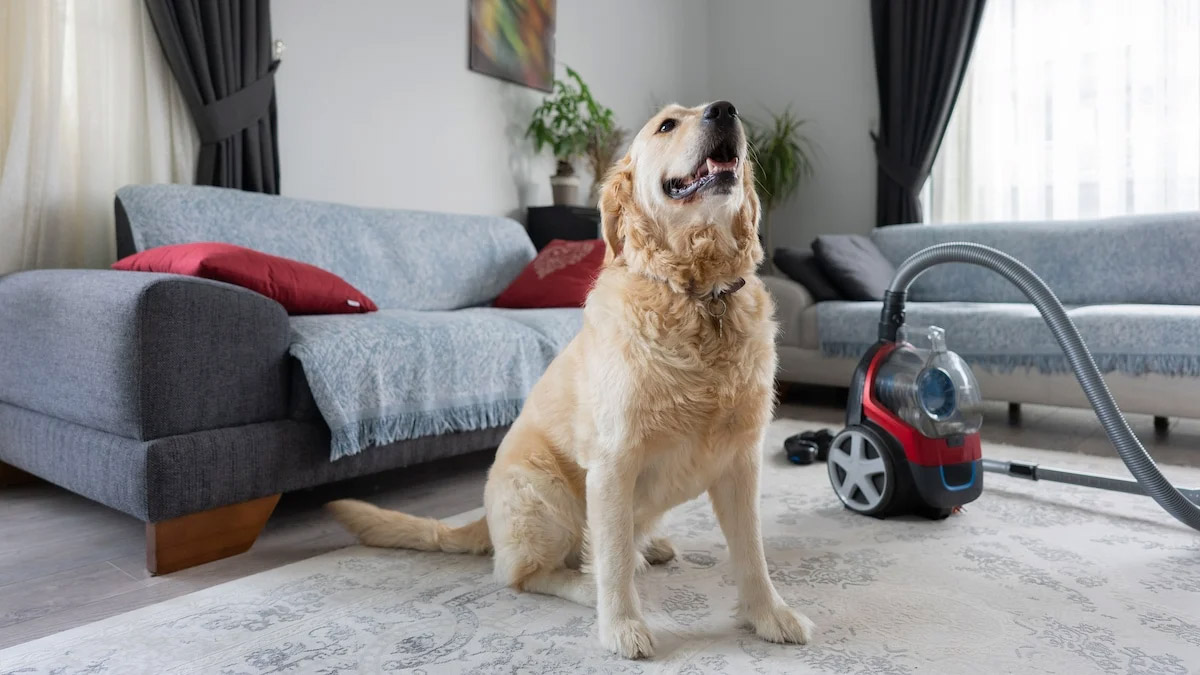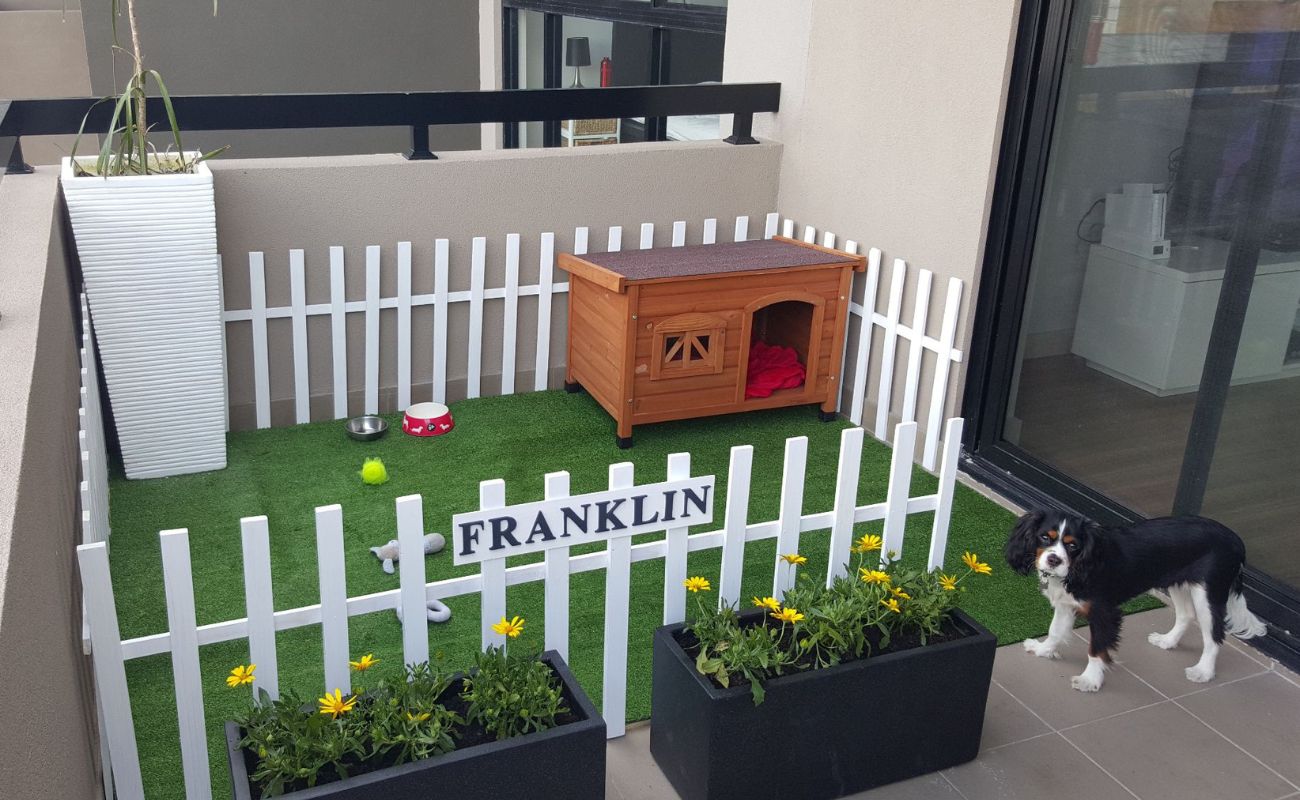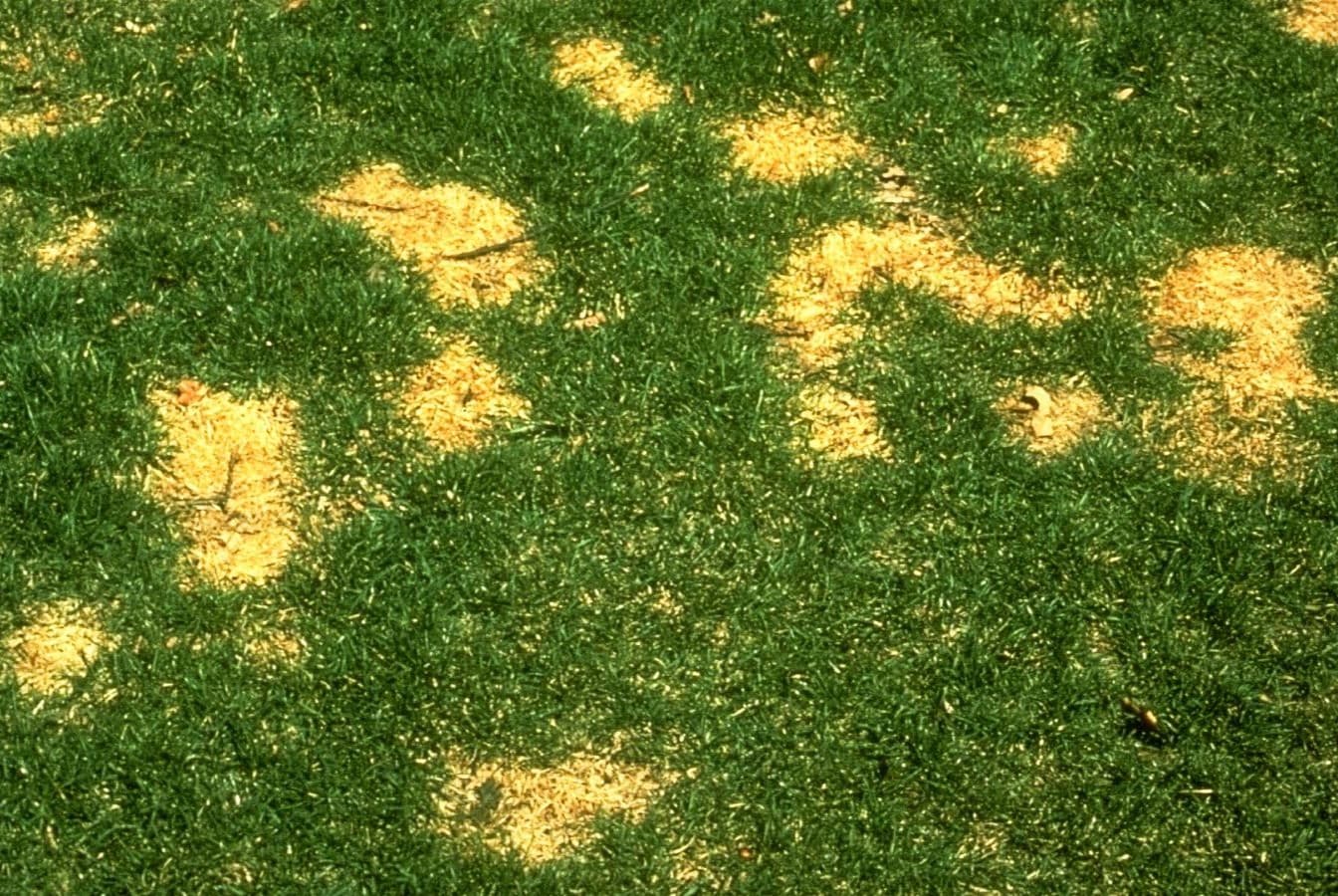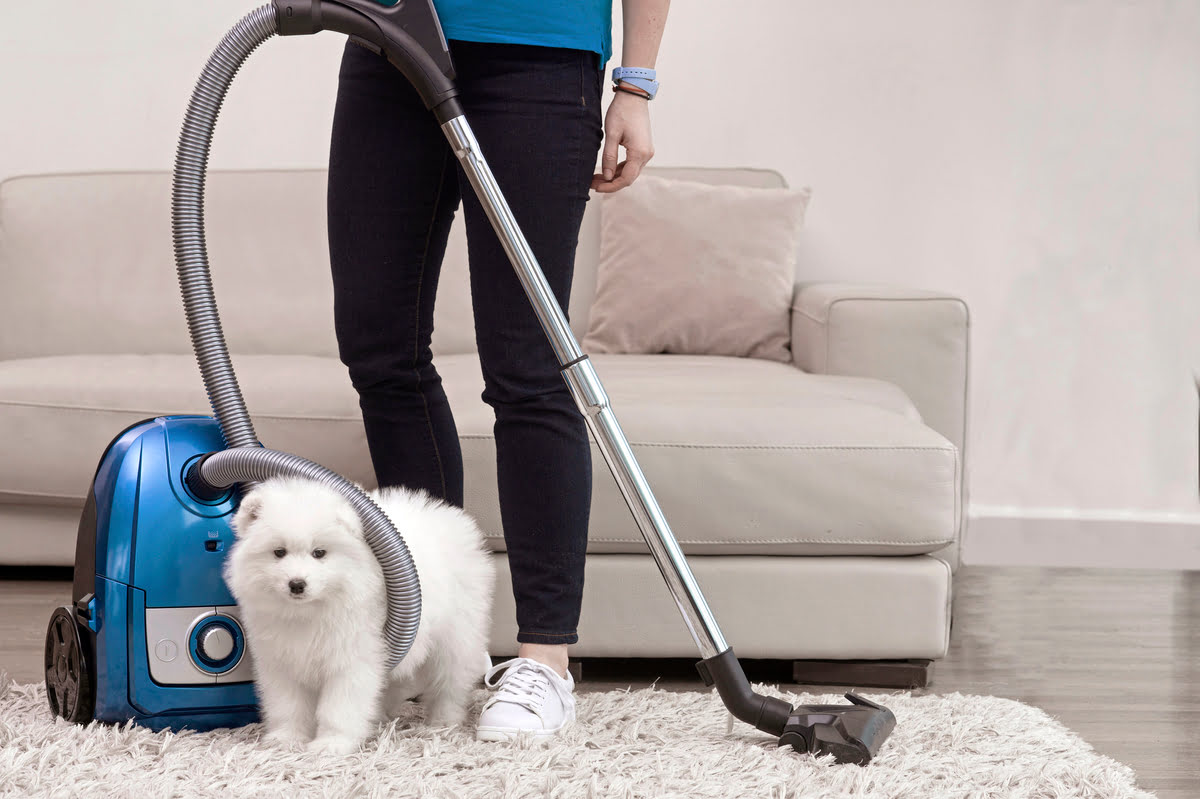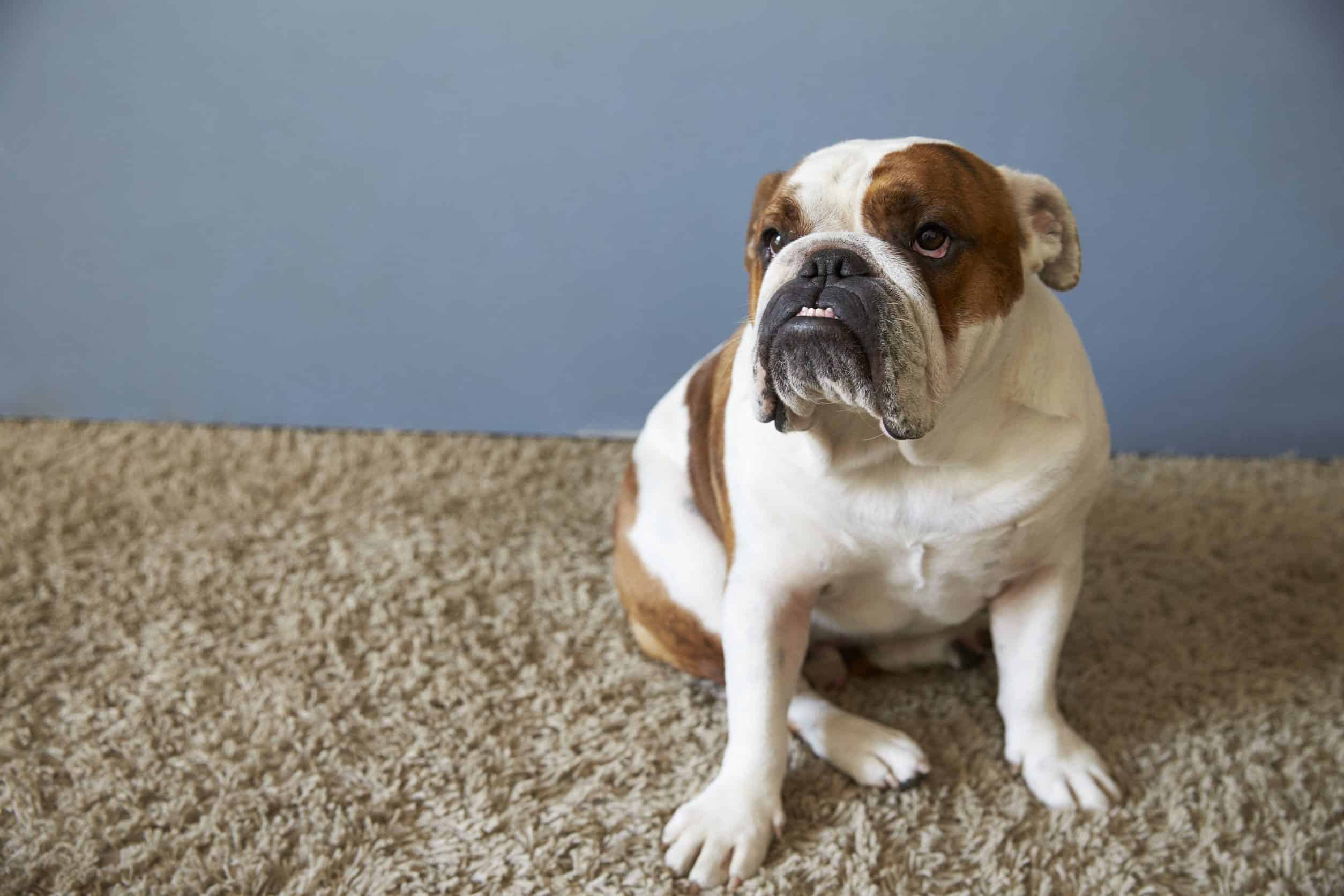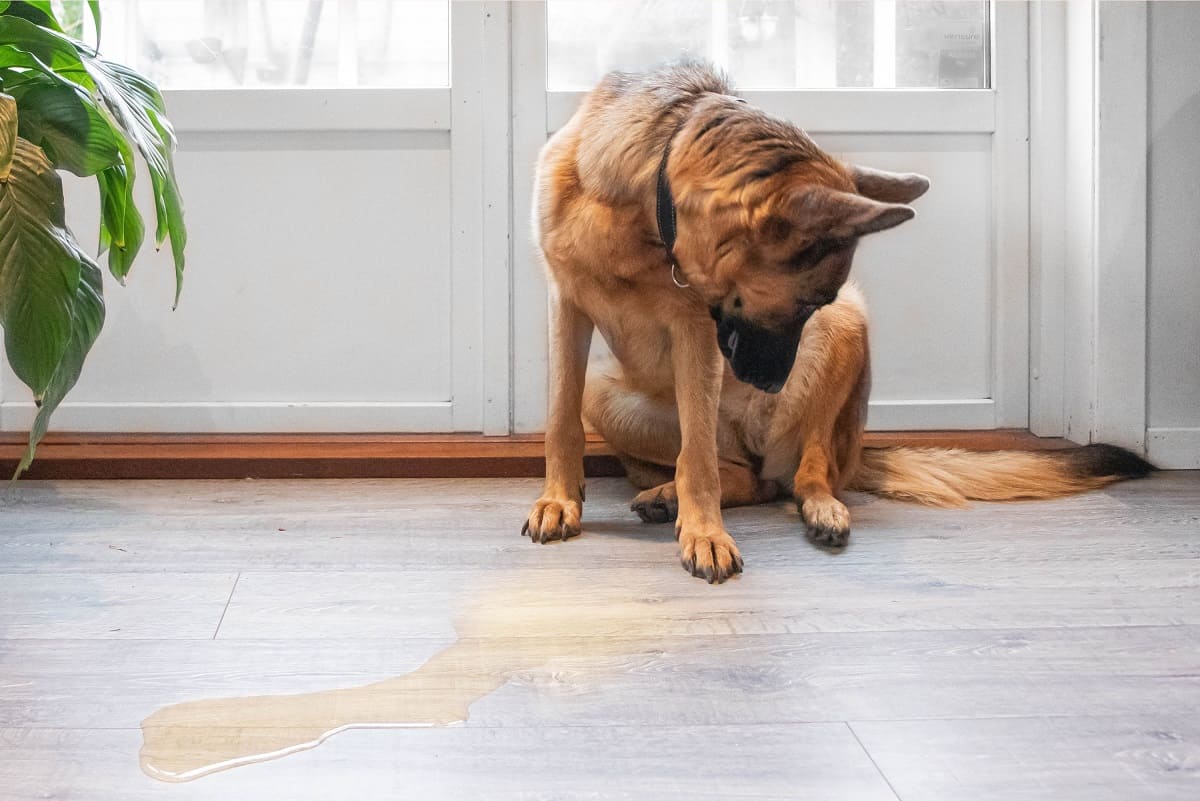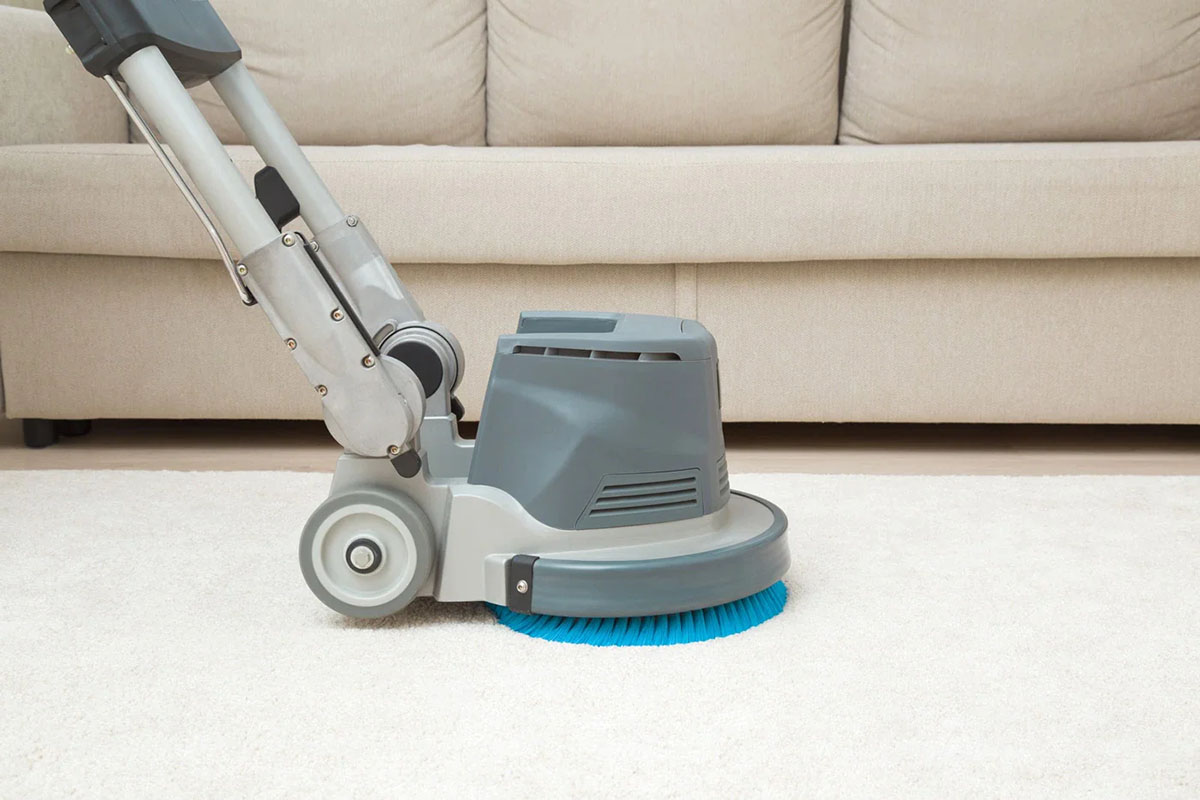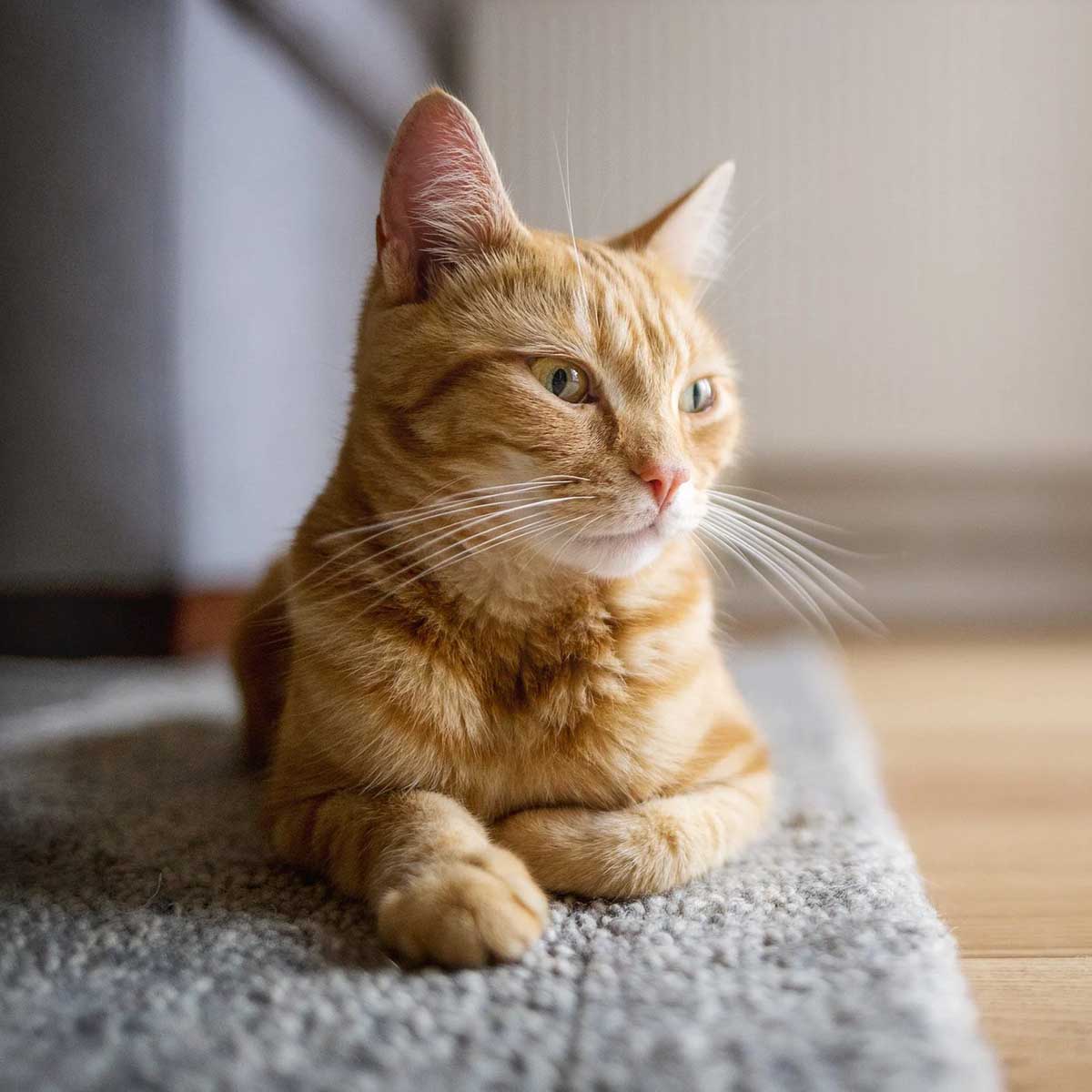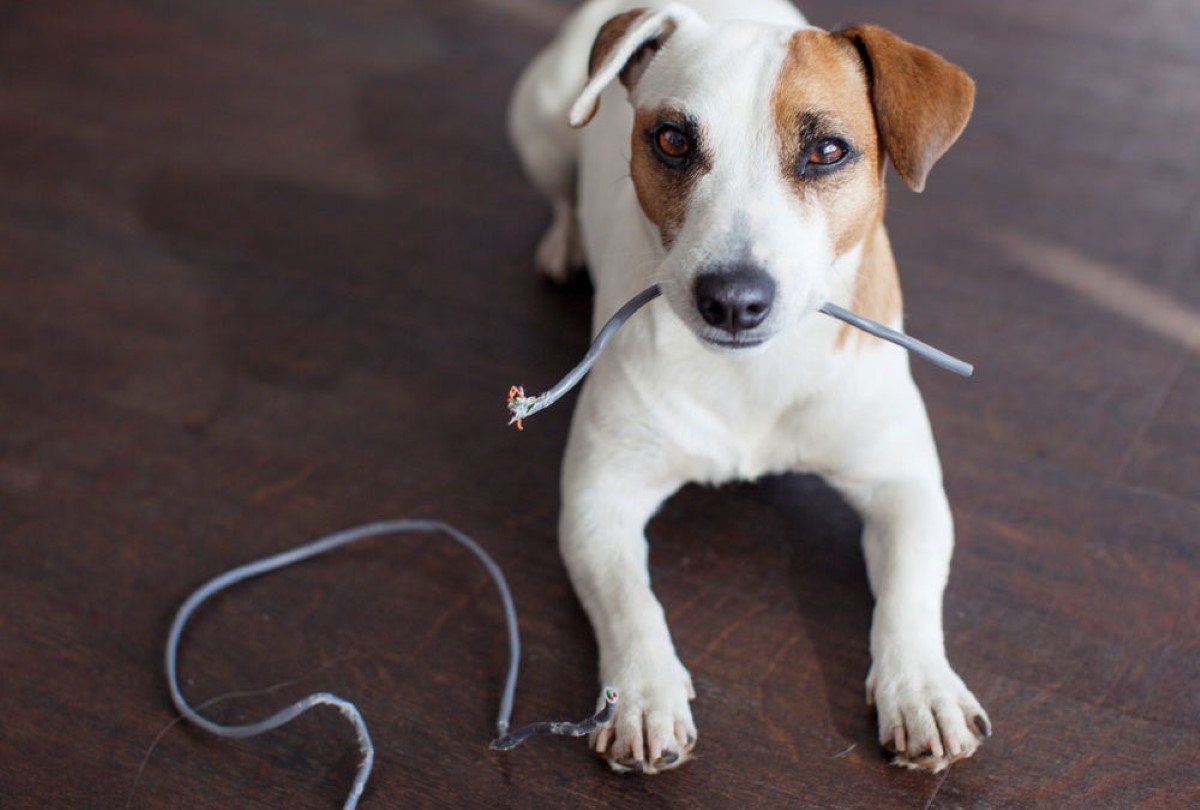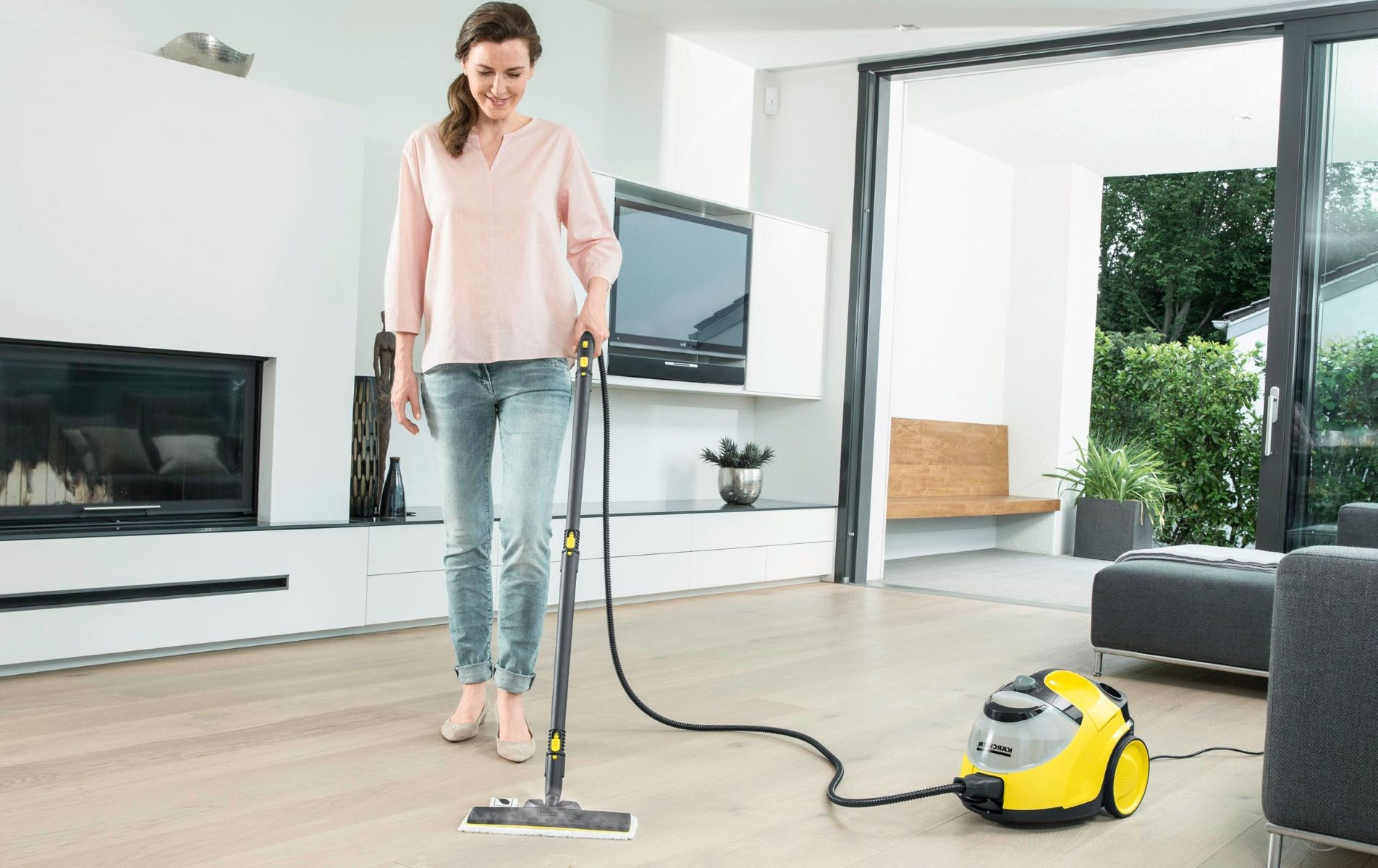Home>Articles>What Can You Put On A Carpet To Keep Dogs From Peeing
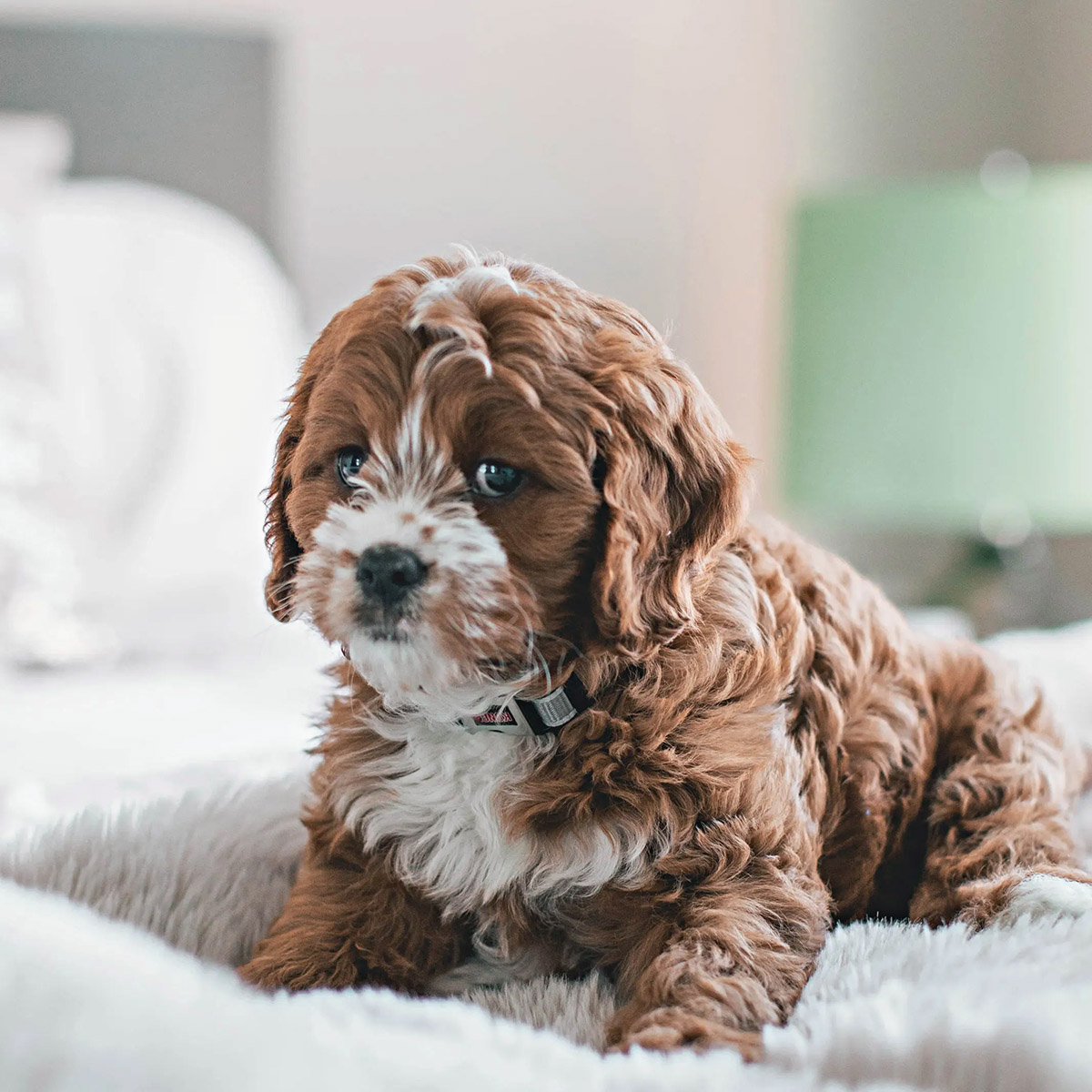

Articles
What Can You Put On A Carpet To Keep Dogs From Peeing
Modified: September 1, 2024
Looking for articles on how to keep dogs from peeing on your carpet? Discover effective solutions and prevention techniques in our informative guide. Protect your carpet and keep your furry friend happy.
(Many of the links in this article redirect to a specific reviewed product. Your purchase of these products through affiliate links helps to generate commission for Storables.com, at no extra cost. Learn more)
Introduction
Having a furry friend in your household can be a source of endless joy and companionship. However, one challenge that many dog owners face is the issue of their pets urinating on the carpet. Not only can this be frustrating and result in unpleasant odors, but it can also cause damage to your carpets and create an unsanitary living environment.
Understanding why dogs pee on carpets is the first step towards finding a solution to this problem. Dogs may urinate on carpets due to a variety of reasons, such as marking their territory, anxiety or stress, health issues, or simply because they haven’t been properly house-trained. Regardless of the underlying cause, it is important to address this issue promptly and effectively.
In this article, we will explore the importance of addressing this problem and provide you with natural remedies and commercial products that can help deter your dog from peeing on carpets. We will also share valuable tips for preventing accidents and promoting proper potty habits in your furry friend.
By implementing these strategies, you can maintain a clean and odor-free home while ensuring the well-being and comfort of your beloved canine companion.
Key Takeaways:
- Natural remedies like vinegar, citrus spray, and baking soda can deter dogs from peeing on carpets, providing safe and effective alternatives to harsh chemicals.
- Consistent training, positive reinforcement, and proper cleaning of accidents are essential in preventing dogs from peeing on carpets, creating a clean and harmonious living environment for both pets and owners.
Understanding the Issue
Before delving into solutions, it is crucial to understand why dogs have a tendency to pee on carpets. Dogs are instinctively inclined to mark their territory and establish a sense of ownership. While this behavior is more commonly associated with male dogs, both male and female dogs may engage in marking behavior.
Anxiety or stress can also lead to a dog urinating on carpets. Changes in routine, new household members or pets, or even loud noises can trigger feelings of anxiety in your furry companion, causing them to seek solace by marking their territory.
In some cases, peeing on carpets may be an indication of an underlying medical issue. It is important to consult with your veterinarian to rule out any potential health concerns that may be contributing to this behavior.
If your dog is not properly house-trained, accidents on the carpet can occur more frequently. House-training involves teaching your dog where and when it is appropriate to eliminate waste. Consistent and positive reinforcement training is key to establishing good potty habits in your dog.
Understanding the reasons behind your dog’s behavior can help guide you towards an appropriate and effective solution. It is important to approach the issue with patience, empathy, and a willingness to modify your dog’s environment and daily routine to encourage positive behavior.
Importance of Addressing the Problem
Addressing the issue of dogs peeing on carpets is crucial for several reasons. First and foremost, it ensures a clean and hygienic living environment for both you and your furry friend. Urine stains and odors can be difficult to remove from carpets, and if left unattended, they can permeate the fibers and create a lingering smell that is hard to eliminate.
Additionally, repeatedly allowing your dog to pee on carpets can lead to permanent damage to the carpet fibers, resulting in costly repairs or replacements. Carpets can hold onto bacteria and other pathogens when soiled, posing a health risk to both humans and pets.
Addressing the problem is also important for maintaining a harmonious living space. The smell of urine can be off-putting and create an unpleasant atmosphere in your home. It can also attract insects and pests, further diminishing the quality of your living environment.
Moreover, addressing the issue of dogs peeing on carpets is essential for the well-being and happiness of your dog. Dogs are naturally clean animals and prefer to eliminate waste in appropriate areas. When dogs consistently have accidents on carpets, it can be a sign that they are experiencing stress, anxiety, or discomfort. By addressing the problem, you can create a more comfortable and stress-free environment for your furry companion.
Finally, addressing this issue will save you time, money, and frustration in the long run. By implementing effective strategies and preventative measures, you can minimize the occurrence of accidents and maintain the condition of your carpets, ultimately reducing the need for extensive cleaning or replacement.
In summary, addressing the problem of dogs peeing on carpets is essential for maintaining a clean, hygienic, and harmonious living environment. It promotes the well-being of both humans and pets, saves time and money, and allows for a happier and healthier coexistence with your furry friend.
Natural Remedies to Deter Dogs from Peeing on Carpets
If you’re looking for natural remedies to deter your dog from peeing on carpets, you’re in luck! There are several common household items that can help discourage this undesirable behavior without resorting to harsh chemicals or methods. Here are some effective natural remedies:
- Vinegar Solution: Create a mixture of equal parts white vinegar and water and spray it on the affected area of the carpet. Dogs have a strong aversion to the smell of vinegar, and this solution can help deter them from peeing in that spot.
- Citrus Spray: Dogs are generally repelled by the smell of citrus fruits. Squeeze the juice of a lemon or orange into a spray bottle and dilute it with water. Spritz this mixture onto the carpet to discourage your dog from urinating in that area.
- Baking Soda: Sprinkling baking soda on the carpet can help neutralize odors and discourage your dog from peeing in that spot. Leave it on the carpet for a few hours, then vacuum it up.
- Cayenne Pepper: Dogs have a strong aversion to the smell and taste of spicy substances. Sprinkle a liberal amount of cayenne pepper onto the carpet, focusing on the areas where your dog tends to urinate. This will create a deterrent and discourage your dog from repeating the behavior.
- Essential Oils: Certain essential oils, such as peppermint, lavender, or eucalyptus, have a strong scent that dogs dislike. Dilute a few drops of these oils in water and spray the solution onto the carpet. Remember to use pet-safe essential oils and avoid direct contact with your dog’s skin.
It’s important to note that while these natural remedies can be effective in deterring dogs from peeing on carpets, they may not work for every dog. Some dogs may have different preferences or sensitivities to certain smells. It may be necessary to try different remedies or a combination of them to find what works best for your furry companion.
Remember to consult with your veterinarian before using any natural remedies, especially if your dog has any underlying health conditions or sensitivities.
By incorporating these natural remedies into your strategy, you can create an environment that discourages your dog from urinating on carpets, promoting proper potty habits and a cleaner living space.
Vinegar Solution
A vinegar solution is a popular and effective natural remedy for deterring dogs from peeing on carpets. Dogs have a strong aversion to the smell of vinegar, making it an ideal option to use as a deterrent. Follow these steps to create and use a vinegar solution:
- Start by mixing equal parts white vinegar and water in a spray bottle. For example, you can use one cup of vinegar and one cup of water.
- Thoroughly clean the area of the carpet where your dog has previously urinated. Use a mild detergent or carpet cleaner to remove any lingering odor or stains.
- Test the vinegar solution on a small and inconspicuous area of the carpet to ensure that it doesn’t cause any discoloration or damage. Wait for a few minutes and check for any adverse effects.
- If the test area is unaffected, proceed by spraying the vinegar solution onto the affected area of the carpet. Make sure to cover the entire area where your dog tends to urinate.
- Avoid saturating the carpet with the vinegar solution. A light misting is sufficient to deter your dog without causing any damage to the carpet fibers.
- Allow the vinegar solution to sit on the carpet for a few minutes, then blot it dry with a clean cloth or paper towels. This will help remove the excess moisture and prevent any potential damage to the carpet.
- Repeat this process as needed, especially if your dog continues to urinate on the carpet. Consistency is key in reinforcing the message and deterring your dog from repeating the behavior.
It’s important to note that while vinegar is generally safe for use around dogs, it is always recommended to keep an eye on your pet and ensure they do not have any adverse reactions. If your dog shows signs of discomfort or irritation, discontinue the use of the vinegar solution and consult with a veterinarian.
Using a vinegar solution as a deterrent can be an effective and inexpensive way to discourage your dog from peeing on carpets. However, it is important to address the underlying reasons behind the behavior and implement proper training and preventive measures to ensure long-term success.
Read more: What Can You Put Over A Carpet
Citrus Spray
Citrus spray is a natural and effective remedy for deterring dogs from urinating on carpets. Dogs are generally repelled by the smell of citrus fruits, making this a safe and pet-friendly option to discourage the behavior. Here’s how you can use citrus spray to keep your dog from peeing on carpets:
- Start by selecting a citrus fruit, such as a lemon or an orange.
- Squeeze the juice of the citrus fruit into a spray bottle. You can also add a few drops of citrus essential oil for added potency.
- Dilute the citrus juice with an equal amount of water in the spray bottle. This will help prevent any potential harm to the carpet fibers and create a more pleasant scent.
- Thoroughly clean the area of the carpet where your dog has previously urinated. Use a mild detergent or carpet cleaner to remove any residual odors.
- Spray the citrus solution onto the affected area of the carpet. Ensure that the solution covers the entire area and saturates the carpet fibers.
- Allow the citrus spray to sit on the carpet for a few minutes. This will give the scent time to permeate the fibers and create a deterrent for your dog.
- Blot the area dry with a clean cloth or paper towels, removing any excess moisture from the carpet.
- Repeat this process whenever necessary, especially if your dog continues to urinate on the carpet. Consistency is key in reinforcing the message and discouraging the behavior.
It is important to note that while citrus spray is generally safe for use around dogs, individual sensitivities may vary. If you notice any signs of discomfort or irritation in your pet, discontinue the use of citrus spray and consult with a veterinarian.
Using citrus spray to deter your dog from peeing on carpets provides a natural and pet-friendly solution. Additionally, the refreshing citrus scent can help freshen up the carpet and eliminate any lingering odors.
However, it is important to address the underlying reasons behind the behavior and provide appropriate training and preventive measures to establish proper potty habits in your dog. Consistency, patience, and positive reinforcement are key to ensuring long-term success in deterring your dog from urinating on carpets.
Baking Soda
Baking soda is a versatile household ingredient that can not only neutralize odors but also deter dogs from peeing on carpets. Its natural properties help absorb moisture and eliminate unpleasant smells, making it an effective and budget-friendly solution. Here’s how you can use baking soda to prevent your dog from urinating on carpets:
- Begin by thoroughly cleaning the affected area of the carpet. Use a mild detergent or carpet cleaner to remove any stains and odors caused by previous accidents.
- Allow the carpet to dry completely before proceeding with the application of baking soda.
- Once the carpet is dry, sprinkle a generous amount of baking soda directly onto the affected area. Focus on the spots where your dog tends to urinate.
- Gently work the baking soda into the carpet fibers using a soft brush or your fingers. This will help the baking soda reach deep into the carpet and absorb any lingering moisture or odors.
- Leave the baking soda on the carpet for a few hours, or even overnight, to allow it to work its magic. The longer you leave it, the better it will be at neutralizing odors.
- After the desired amount of time has passed, vacuum the carpet thoroughly to remove the baking soda. Use a powerful vacuum cleaner to ensure that all the baking soda is effectively removed.
- Repeat this process as needed to prevent your dog from urinating on the carpet. Baking soda is safe to use and can be applied regularly without causing any harm.
In addition to deterring dogs from peeing on carpets, baking soda also helps eliminate any lingering odors. It is a natural and non-toxic option, making it safe to use around both humans and pets.
However, it is important to address the underlying reasons behind this behavior and incorporate proper potty training and preventive measures to establish good habits in your dog. While baking soda can be effective at neutralizing odors and acting as a deterrent, it is not a substitute for consistent training and reinforcement.
By using baking soda as a natural remedy, you can maintain a fresh and clean carpet while discouraging your dog from urinating in unwanted areas.
Cayenne Pepper
Cayenne pepper is a natural spice that can be used as a deterrent to prevent dogs from peeing on carpets. Dogs have a strong aversion to the smell and taste of spicy substances, making this a useful and safe option to discourage the behavior. Here’s how you can utilize cayenne pepper to keep your dog from urinating on carpets:
- Start by acquiring powdered cayenne pepper from your local grocery store or spice shop. Make sure to choose pure cayenne pepper without any added ingredients.
- Thoroughly clean the areas of the carpet where your dog has previously urinated. Use a mild detergent or carpet cleaner to remove any stains and residual odors.
- Sprinkle a liberal amount of cayenne pepper directly onto the affected areas of the carpet. Focus on the spots where your dog tends to urinate.
- Gently work the cayenne pepper into the carpet fibers using a soft brush or your fingers. This ensures that the pepper penetrates the carpet and makes it less appealing for your dog.
- Be cautious while applying cayenne pepper, as it can cause irritation if it comes into contact with your dog’s skin or eyes. Keep your dog away from the area while you’re applying the pepper and ensure that it is well-distributed into the carpet fibers.
- Leave the cayenne pepper on the carpet for some time. The strong scent and taste will deter your dog from urinating in that area.
- After a sufficient period of time, vacuum the carpet thoroughly to remove the cayenne pepper. Make sure to dispose of the vacuum bag or clean out the canister to prevent the pepper from spreading elsewhere.
- Repeat this process as needed to reinforce the deterrent effect of cayenne pepper and discourage your dog from future accidents on the carpet.
While cayenne pepper is generally safe to use, it’s important to monitor your dog for any signs of discomfort or irritation. If you notice any adverse reactions, discontinue its use and consult with a veterinarian.
However, it’s crucial to address the underlying reasons behind this behavior and implement proper potty training and preventive measures. Consistent training and positive reinforcement are key to ensuring long-term success in deterring your dog from urinating on carpets.
By using cayenne pepper as a natural deterrent, you can create an environment that discourages your dog from urinating in unwanted areas while keeping your carpets clean and odor-free.
Essential Oils
Essential oils can be a useful natural remedy for deterring dogs from peeing on carpets. Certain essential oils have strong scents that dogs find unpleasant, making them effective in discouraging unwanted behavior. Here’s how you can utilize essential oils to prevent your dog from urinating on carpets:
- Choose pet-safe essential oils for this purpose, such as peppermint, lavender, or eucalyptus oil. These oils have scents that dogs dislike and can serve as effective deterrents.
- Dilute a few drops of the chosen essential oil with water in a spray bottle. The precise ratio may vary based on the oil’s potency and the size of the spray bottle, but a good starting point is around 5-10 drops in a 16-ounce bottle.
- Thoroughly clean the areas of the carpet where your dog has previously urinated. Use a mild detergent or carpet cleaner to remove any stains and residual odors.
- Spray the diluted essential oil solution onto the affected areas of the carpet. Ensure that the solution is evenly distributed and covers the entire area where your dog tends to urinate.
- Allow the carpet to air dry naturally. The scent of the essential oil will linger, creating a deterrent effect for your dog.
- Repeat this process as needed to consistently reinforce the message and discourage your dog from urinating on the carpet.
It’s important to note that while essential oils can be effective deterrents, it’s crucial to use them with caution and ensure that your dog doesn’t come into direct contact with them. Some dogs may have sensitivities or allergies to certain oils, so it’s best to observe their behavior and consult with a veterinarian if any adverse reactions occur.
Additionally, remember to use essential oils sparingly and in well-ventilated areas. Overly concentrated or excessive use of essential oils can be overwhelming for both humans and dogs.
While essential oils can help deter your dog from urinating on carpets, it’s important to address the underlying reasons for this behavior and provide proper training and preventive measures. Consistency, positive reinforcement, and creating a suitable environment are crucial in effectively discouraging accidents on the carpet.
By incorporating pet-safe essential oils as a natural deterrent, you can maintain a clean, fresh-smelling carpet while promoting proper potty habits in your furry friend.
Read more: How To Keep Dogs From Pooping On A Carpet
Commercial Products for Preventing Dog Pee on Carpets
In addition to natural remedies, there are various commercial products available that are specifically designed to prevent dogs from peeing on carpets. These products often contain ingredients or scents that are unappealing to dogs, helping to discourage the behavior and protect your carpets. Here are some common types of commercial products that can be effective in preventing dog pee on carpets:
- Pet Repellent Sprays: Pet repellent sprays are designed to emit a scent that dogs find unpleasant, deterring them from urinating in specific areas. These sprays are typically safe to use on carpets and can be applied directly to the affected areas. Always follow the instructions provided by the manufacturer when using these sprays.
- Indoor Dog Potty Training Sprays: These sprays are specifically formulated to attract dogs to designated potty areas while deterring them from other areas, such as carpets. The scent of these sprays encourages dogs to eliminate in specific spots, making them useful in redirecting your dog’s behavior away from carpets.
- Carpet Cleaners with Odor Neutralizers: Certain carpet cleaners are specifically designed to eliminate urine odors and stains. These products contain enzymes and bacteria that break down the organic compounds in urine, effectively neutralizing odors and discouraging dogs from re-soiling the same spot. Use these carpet cleaners according to the instructions provided by the manufacturer.
When considering commercial products, it’s important to choose those that are safe for both your dog and your carpets. Read the product labels carefully and look for pet-friendly options that do not contain harsh chemicals or toxic ingredients. Additionally, consider conducting a patch test in an inconspicuous area of your carpet to ensure that the product does not cause any discoloration or damage.
Remember that while commercial products can be helpful, they should be used in conjunction with proper training and preventive measures. It’s essential to address the underlying reasons behind your dog’s behavior and establish good potty habits through consistent training, positive reinforcement, and creating a suitable environment.
By incorporating commercial products alongside other preventive strategies, you can effectively prevent dog pee on carpets and maintain a clean and odor-free living space.
You can use a pet repellent spray or a mixture of white vinegar and water to deter dogs from peeing on the carpet. These solutions create a scent that dogs typically find unpleasant.
Pet Repellent Sprays
Pet repellent sprays are an effective commercial product for preventing dogs from peeing on carpets. These sprays work by emitting a scent that dogs find unpleasant, acting as a deterrent to discourage them from urinating in specific areas. Here’s what you need to know about pet repellent sprays:
- Choosing a Pet Repellent Spray: There are various pet repellent sprays available on the market. Look for sprays that are specifically formulated for dogs and safe to use on carpets. Read customer reviews and consider consulting with a veterinarian to choose a product that is proven to be effective and pet-friendly.
- Applying the Spray: Before applying the pet repellent spray, thoroughly clean the affected area of the carpet using a mild detergent or carpet cleaner. This helps eliminate any existing pet odors and prepares the area for treatment. Follow the instructions provided by the manufacturer for application guidelines. Typically, you will need to spray the product directly onto the carpet, focusing on the areas where your dog tends to urinate.
- Reapplying as Needed: Pet repellent sprays may need to be reapplied periodically, especially if your dog continues to exhibit the unwanted behavior. Factors such as humidity, frequent cleaning, or your dog’s sensitivity to the spray’s scent can influence the efficacy of the product. Check the instructions or product label for guidance on when and how frequently to reapply.
- Potential Drawbacks: While pet repellent sprays can be effective, it’s important to consider potential drawbacks. Some sprays may contain strong scents that can be overwhelming for both humans and pets. Additionally, dogs with a high tolerance for certain smells may become accustomed to the scent over time, reducing the effectiveness of the spray. Monitor your dog’s behavior and consider using a different product or alternative methods if necessary.
It’s worth noting that pet repellent sprays are most effective when used in conjunction with proper training and preventive measures. Consistency, positive reinforcement, and creating a suitable environment are crucial in deterring your dog from peeing on carpets. Combine the use of pet repellent sprays with techniques such as establishing a designated potty area, regular potty breaks, and proper cleaning of accidents to reinforce proper potty behavior.
Always ensure that the pet repellent spray you choose is safe for both your dog and your carpets by reading the product label and following the instructions provided. If you have any concerns or questions, consult with a veterinarian for guidance.
By using pet repellent sprays as part of a comprehensive approach to preventing dog pee on carpets, you can effectively discourage this behavior and maintain a clean and odor-free living space for both you and your furry friend.
Indoor Dog Potty Training Sprays
Indoor dog potty training sprays are specially formulated to attract dogs to specific potty areas while deterring them from urinating on carpets or other unwanted spots. These sprays contain scents that mimic natural outdoor potty areas, encouraging dogs to eliminate in designated areas. Here is a closer look at indoor dog potty training sprays:
- Choosing the Right Spray: Look for indoor dog potty training sprays that are specifically designed for this purpose. Consider products that use pheromones or other natural scents that dogs find attractive as urine markers. Read customer reviews and seek recommendations from veterinarians or experienced dog trainers to find a product that has proven to be effective.
- Identifying the Designated Potty Area: Before using the spray, establish a designated potty area for your dog inside your home. This can be an unused bathroom, laundry room, or any area that can be easily cleaned. Place a potty training pad or artificial grass in the designated area to create a consistent spot for your dog to eliminate.
- Using the Spray: Apply the indoor dog potty training spray to the potty training pad or artificial grass in the designated area. Follow the instructions provided by the manufacturer in terms of the amount of spray to use. The scent of the spray will attract your dog to that specific spot, indicating it as the appropriate area for eliminating waste.
- Positive Reinforcement: When your dog successfully uses the designated potty area, praise and reward them with treats or verbal praise. Consistent positive reinforcement helps reinforce the association between the designated area and proper potty behavior.
- Cleaning Accidents Properly: If your dog has an accident on the carpet or any other unwanted area, it’s important to clean it up thoroughly. Use an enzymatic cleaner specifically designed for pet stains to completely eliminate the odor. This step is crucial as any remaining scent may confuse your dog and encourage them to continue using that area as a potty spot.
Indoor dog potty training sprays can be a helpful tool in redirecting your dog’s elimination behavior to designated potty areas inside your home. However, it’s important to note that consistency and patience are key in achieving success. It may take time for your dog to fully understand and adapt to the new routine. Continue reinforcing the proper potty behavior and cleaning up accidents promptly to avoid confusion.
Remember, indoor dog potty training sprays should be used as part of a comprehensive potty training plan, which may include other techniques such as regular potty breaks, establishing routines, and providing ample opportunities for outdoor elimination. Consult with a professional dog trainer or veterinarian for personalized guidance and additional tips for successful potty training.
By using indoor dog potty training sprays alongside consistent training and positive reinforcement, you can effectively guide your dog to use designated areas for elimination, reducing the likelihood of accidents on carpets and promoting a clean and odor-free living environment.
Carpet Cleaners with Odor Neutralizers
Carpet cleaners with odor neutralizers are a valuable commercial product for preventing dog pee on carpets. These cleaners are specifically formulated to eliminate urine odors and stains, helping to discourage dogs from re-soiling the same spots. Here’s what you need to know about carpet cleaners with odor neutralizers:
- Choosing the Right Carpet Cleaner: Look for carpet cleaners that are specifically designed to tackle pet urine odors and stains. These cleaners often contain enzymes or bacteria that break down the organic compounds in urine, effectively neutralizing odors. Select a product that is safe for use on your type of carpet and read customer reviews to ensure its effectiveness.
- Cleaning the Affected Area: Before using the carpet cleaner, thoroughly clean the affected area of the carpet to remove any solid waste or excess urine. Blot the area with paper towels or a clean cloth to absorb as much liquid as possible. Avoid rubbing the stain, as it can spread the urine deeper into the carpet fibers.
- Follow the Manufacturer’s Instructions: Different carpet cleaners may have specific instructions for usage. It’s important to carefully read and follow the instructions provided by the manufacturer. This includes dilution ratios, application techniques, and recommended waiting times before blotting or extracting the cleaner.
- Applying the Carpet Cleaner: Apply the carpet cleaner to the affected area according to the instructions. Make sure to saturate the area thoroughly to allow the cleaner to penetrate the carpet fibers and reach the source of the urine odor. Use a clean cloth or a brush to gently work the cleaner into the carpet, avoiding excessive rubbing.
- Removing Excess Moisture: After allowing the carpet cleaner to sit for the recommended amount of time, blot the spot with clean, absorbent towels to remove excess moisture. If you have a carpet cleaner with an extraction function, follow the manufacturer’s instructions for using the machine to remove the cleaner and extract any remaining liquid.
- Repeat as Necessary: Depending on the severity of the urine stains and odors, you may need to repeat the cleaning process multiple times. This is especially true for deep or long-standing stains. Follow the instructions on the carpet cleaner and continue cleaning until the odor is completely eliminated.
While carpet cleaners with odor neutralizers are effective in removing urine stains and odors, it’s important to address the underlying reasons behind your dog’s behavior. Implement proper potty training, consistent routines, and positive reinforcement techniques to discourage your dog from peeing on carpets in the first place.
Moreover, it’s essential to choose carpet cleaners that are safe for both your dog and your carpets. Ensure the product is labeled as pet-friendly and non-toxic. If you have concerns about specific ingredients, consult with a veterinarian to find the most suitable and safe carpet cleaner for your household.
By using carpet cleaners with odor neutralizers, you can effectively eliminate urine odors and stains, discouraging dogs from re-soiling specific areas of your carpets. Regular cleaning and maintenance will help keep your carpets fresh and free from lingering odors.
Read more: How To Stop My Dog From Peeing On My Carpet
Tips for Preventing Dogs from Peeing on Carpets
Dogs peeing on carpets can be a frustrating issue for pet owners. However, with the right strategies and preventive measures, you can effectively prevent this behavior and maintain a clean and odor-free living space. Here are some helpful tips:
- Frequent Potty Breaks: Ensure that your dog has regular and frequent opportunities to go outside and eliminate. Establish a consistent schedule for potty breaks, especially after meals, playtime, and waking up. By providing ample opportunities for your dog to relieve themselves outdoors, you reduce the likelihood of accidents on your carpets.
- Establish a Designated Potty Area: Designate a specific area in your yard for your dog to use as their potty spot. Take your dog to this designated area consistently and reinforce the behavior with positive reinforcement, such as praise or treats, when they eliminate in the designated spot. This helps create a clear association between outdoor elimination and appropriate areas.
- Consistent Training and Positive Reinforcement: Proper potty training is essential in preventing accidents on carpets. Establish a consistent routine for your dog’s bathroom needs and provide positive reinforcement and rewards when they eliminate in the appropriate areas. Avoid punishing or scolding your dog when accidents happen, as this can lead to fear or anxiety surrounding elimination.
- Cleaning Accidents Properly: If your dog has an accident on the carpet, it’s important to clean it up promptly and thoroughly. Use pet-friendly enzymatic cleaners that are specifically designed to neutralize urine odors. Avoid using cleaning products with strong scents, as they may attract your dog to the area again. Proper cleaning helps remove the odor and discourages your dog from returning to the same spot.
- Monitoring and Supervision: Keep an eye on your dog, especially during the initial stages of potty training. Supervision helps you anticipate when your dog needs to eliminate and allows you to redirect them to the appropriate designated potty area. As your dog becomes more reliable in their potty habits, you can gradually increase their freedom within the house.
It’s important to be patient and consistent throughout the potty training process. Every dog learns at their own pace, so it’s essential to be understanding and provide positive reinforcement for good behavior. Remember that accidents may happen occasionally, especially during the learning phase, and it’s crucial not to get discouraged.
Additionally, consulting with a professional dog trainer or a veterinarian can provide further guidance and support in addressing potty training challenges or underlying behavioral issues.
By implementing these tips for preventing dogs from peeing on carpets, you can establish proper potty habits in your furry friend and maintain a clean and odor-free home. With patience and consistency, you’ll help your dog understand where it’s appropriate to eliminate and foster a happy and harmonious living environment for both of you.
Frequent Potty Breaks
Frequent potty breaks are essential for preventing dogs from peeing on carpets. By providing your dog with regular opportunities to eliminate outdoors, you can reduce the likelihood of accidents and establish a proper routine. Here’s what you need to know about frequent potty breaks:
- Establish a Schedule: Create a consistent schedule for your dog’s potty breaks. Take note of their natural elimination patterns, such as after meals or upon waking up, and incorporate these into their daily routine. Consistency is key to help them understand when and where it’s appropriate to go potty.
- Pay Attention to the Signs: Pay close attention to your dog’s behavior and body language, as they often give signals when they need to go outside. Restlessness, circling, sniffing around, or heading towards the door are common signs that they need to eliminate. Promptly respond to these cues to ensure your dog has the opportunity to go potty outdoors.
- Frequency Depends on Age: The frequency of potty breaks depends on your dog’s age and their ability to hold their bladder. Puppies have smaller bladders and will need more frequent trips outside. As a general guideline, puppies may need to go potty every 1-2 hours, while adult dogs can typically hold it for 4-6 hours. Adjust the frequency accordingly and gradually increase the time between breaks as your dog matures.
- Use Positive Reinforcement: When your dog successfully eliminates outside, praise them and offer a reward, such as treats or verbal praise. Positive reinforcement helps reinforce the desired behavior and encourages your dog to continue pottying in the appropriate areas.
- Monitor Water Intake: Keep an eye on your dog’s water intake, especially before bedtime. Limiting water intake a few hours before bedtime can help reduce the need for nighttime potty breaks. However, it’s important to ensure that your dog has access to fresh water throughout the day to stay hydrated.
- Consider Hiring a Dog Walker: If you are away from home for extended periods, consider hiring a dog walker to provide midday potty breaks for your furry friend. This ensures they get the necessary bathroom breaks and avoids accidents on carpets due to prolonged periods without relief.
Remember that every dog is different, so it’s important to observe their individual needs and adjust the potty break schedule accordingly. Consistency, patience, and positive reinforcement are key to establishing proper potty habits in your dog.
By providing frequent potty breaks and paying attention to your dog’s needs, you can greatly reduce the chances of accidents on carpets and promote a clean and well-maintained living environment for both you and your furry friend.
Establish a Designated Potty Area
Establishing a designated potty area for your dog is a crucial step in preventing them from peeing on carpets. By creating a defined spot for your dog to eliminate, you can redirect their behavior and reinforce proper potty habits. Here’s how to establish a designated potty area:
- Select an Appropriate Area: Choose a specific area in your yard or outdoor space that will serve as your dog’s designated potty area. It should be easily accessible and away from high-traffic areas or areas where your dog eats or plays. Consistency is key, so avoid frequent changes to the designated area.
- Clean the Area: Before introducing your dog to the potty area, ensure that it is clean and free from any previous waste. Remove any solid waste and rinse the area with water to dilute any residual urine scent that may attract your dog to other spots.
- Use Anchor Scents: To encourage your dog to potty in the designated area, utilize anchor scents. Anchor scents can be natural substances such as dirt or grass from your yard, or even potty pads that have been soiled with urine. Place these scents in the designated area to signal to your dog that it is an appropriate spot to eliminate.
- Accompany Your Dog: When it’s time for your dog to go potty, accompany them to the designated area. Use a consistent command or cue such as “go potty” to signal that it’s time to eliminate. Encourage your dog to stay in the designated area until they have finished their business.
- Positive Reinforcement: When your dog successfully goes potty in the designated area, reward them with praise, treats, or playtime. Positive reinforcement helps reinforce the behavior and strengthens the association between the designated area and potty time.
- Maintain Consistency: Consistency is crucial in establishing the designated potty area. Take your dog to the same spot for each potty break to reinforce the habit. Avoid using the area for other activities or allowing other animals to use it, as this may confuse your dog.
It’s important to note that accidents may still occur during the initial training stages. If your dog starts to eliminate in an undesirable area, redirect them to the designated spot and praise them for finishing there. Consistency and positive reinforcement are key to successfully establishing the habit of using the designated potty area.
Remember, indoor dogs or those without easy outdoor access can also be trained to use specific indoor potty areas, such as potty pads or artificial grass. Follow a similar process, designating a specific area indoors and using anchor scents to encourage proper elimination behavior.
By establishing a designated potty area, you provide your dog with a clear understanding of where it’s appropriate to eliminate. This helps prevent accidents on carpets and promotes a cleaner and more hygienic living environment for both you and your furry friend.
Consistent Training and Positive Reinforcement
Consistent training and positive reinforcement are essential components in preventing dogs from peeing on carpets. By using these techniques, you can effectively teach your dog proper potty behavior and reinforce their understanding of where it’s appropriate to eliminate. Here are some tips for consistent training and positive reinforcement:
- Establish a Routine: Create a regular schedule for potty breaks and stick to it. Consistency helps your dog understand when it’s time to go outside and eliminates uncertainty. Take your dog to the designated potty area or outdoors at the same times each day, especially after meals, waking up, and playtime.
- Use Clear and Consistent Commands: Assign a specific command or cue for potty time, such as “go potty” or “do your business.” Use this command consistently, and avoid using it for other purposes. Your dog will learn to associate the command with the act of eliminating, making it easier to communicate your expectations.
- Monitor and Supervise: Supervise your dog, especially during the early stages of potty training. Keep a close eye on their behavior and body language to anticipate when they need to eliminate. If you notice signs, such as circling or sniffing, promptly take them to the designated potty area or outdoors.
- Take Your Dog on Leashed Walks: Regular walks on a leash provide additional opportunities for your dog to eliminate in appropriate areas. Allow them to explore and sniff around, as this can stimulate the need to go potty. Encourage and reward them when they eliminate in the designated potty spots during walks.
- Positive Reinforcement: Positive reinforcement is crucial in reinforcing desired behavior. When your dog eliminates in the designated area or outdoors, immediately praise them and offer treats or verbal praise. Positive reinforcement creates a positive association with potty behavior and encourages them to repeat the behavior in the appropriate locations.
- Avoid Punishment: Punishment or scolding is not effective in potty training and may lead to fear or anxiety. If accidents happen, avoid reacting negatively. Instead, redirect your dog to the appropriate spot or interrupt them mid-accident and take them to the designated potty area. Positive reinforcement for the desired behavior is more effective in establishing consistent potty habits.
Consistency, patience, and positive reinforcement are key to successful training. It’s important to understand that accidents may happen, especially during the learning phase. When accidents occur, clean them up properly without punishment, as dogs do not associate punishment with past behavior.
Consistent training and positive reinforcement should be applied throughout your dog’s life to maintain proper potty habits and prevent accidents on carpets. Be patient and understanding with your dog, providing them with clear expectations and plenty of opportunities to succeed.
If you encounter challenges or feel you need additional guidance, consult a professional dog trainer or veterinarian. They can provide personalized advice and assistance in implementing effective training techniques.
By consistently training your dog and using positive reinforcement, you can prevent accidents on carpets and foster a clean and harmonious living environment for both you and your furry friend.
Read more: How To Stop Dogs From Peeing On Furniture
Cleaning Accidents Properly
Properly cleaning accidents is an essential aspect of preventing dogs from peeing on carpets. Taking prompt and thorough action when accidents occur helps eliminate odors and discourages dogs from revisiting the same spot. Here are some tips for cleaning accidents properly:
- Act Quickly: As soon as you discover an accident on the carpet, act quickly to prevent the urine from soaking deeper into the carpet fibers. The sooner you clean, the easier it will be to remove the stain and odor.
- Blot the Area: Begin by using paper towels or a clean cloth to blot the urine. Avoid rubbing the area, as it can spread the urine and embed it further into the carpet fibers. Gently press down on the spot to absorb as much moisture as possible.
- Use an Enzymatic Cleaner: Enzymatic cleaners are specifically designed to break down the proteins and organic compounds in urine, eliminating the odor at its source. Follow the instructions on the enzymatic cleaner and apply it to the affected area. Make sure to saturate the spot thoroughly, allowing the cleaner to penetrate deep into the carpet fibers.
- Follow Dwell Time Recommendations: Enzymatic cleaners require sufficient dwell time to effectively break down the odor-causing compounds. Typically, the instructions will specify how long the cleaner needs to sit on the carpet before it can be blotted or extracted. Follow the recommendations provided by the manufacturer for the best results.
- Blot or Extract: After the dwell time has passed, blot the area again with a clean cloth or utilize a carpet cleaner with an extraction function. If using a carpet cleaner, follow the manufacturer’s instructions for proper use. Extract any remaining moisture to ensure the area is as dry as possible.
- Avoid Using Harsh Cleaning Agents: Avoid using harsh chemicals, ammonia-based cleaners, or strong-smelling products to clean urine stains. These can intensify the odor and may encourage your dog to remark the area. Stick to pet-friendly enzymatic cleaners, as they are specifically formulated to eliminate urine odors.
- Prevent Access to the Area: As the spot dries, consider blocking your dog’s access to the area to discourage them from revisiting it. Use baby gates or furniture to create barriers, redirecting their attention elsewhere.
- Neutralize Odors: Even after proper cleaning, lingering odors may still attract your dog to previously soiled areas. To neutralize the residual odors, you can use natural remedies like baking soda or pet-safe odor neutralizers. Sprinkle baking soda over the area and let it sit for a few hours before vacuuming it up. Alternatively, you can use a pet-safe odor neutralizing spray to eliminate any remaining odors.
Remember that accidents may happen during the potty training process. It’s important to remain patient and consistent with positive reinforcement training to prevent future accidents.
By cleaning accidents promptly and thoroughly, you can effectively eliminate odors and discourage your dog from peeing on carpets. Providing a clean and fresh environment for both you and your furry friend.
Conclusion
Dealing with dogs peeing on carpets can be a frustrating challenge, but with the right strategies and preventive measures, it is possible to address and prevent this behavior effectively. By understanding the reasons behind this behavior and implementing the tips and techniques outlined in this article, you can maintain a clean and odor-free living space while promoting proper potty habits in your furry friend.
We explored natural remedies such as vinegar, citrus spray, baking soda, cayenne pepper, and essential oils, which can be used to deter dogs from peeing on carpets. These natural solutions provide safe alternatives to harsh chemicals while helping to discourage dogs from soiling the carpets. It’s important to note that every dog is unique, and what works for one may not work for another. It may take some trial and error to find the most effective natural remedy for your dog.
We also discussed the benefits of using commercial products such as pet repellent sprays, indoor dog potty training sprays, and carpet cleaners with odor neutralizers. These products are specifically designed to prevent dogs from peeing on carpets and can be valuable tools in maintaining a clean and fresh-smelling home environment.
Additionally, we shared important tips for preventing dogs from peeing on carpets, including frequent potty breaks, establishing a designated potty area, consistent training, positive reinforcement, and proper cleaning of accidents. These tips, when followed consistently and with patience, can greatly reduce the likelihood of accidents and help your dog develop proper potty habits.
Remember, accidents may still occur during the potty training process, and it’s important to be understanding and patient with your dog. Avoid punishment and focus on positive reinforcement to reinforce desired behaviors and discourage accidents on carpets.
By implementing a combination of natural remedies, commercial products, preventive measures, and consistent training, you can effectively prevent dogs from peeing on carpets. With time, patience, and positive reinforcement, your dog will develop proper potty habits, creating a clean, hygienic, and harmonious living environment for both you and your furry friend.
Frequently Asked Questions about What Can You Put On A Carpet To Keep Dogs From Peeing
Was this page helpful?
At Storables.com, we guarantee accurate and reliable information. Our content, validated by Expert Board Contributors, is crafted following stringent Editorial Policies. We're committed to providing you with well-researched, expert-backed insights for all your informational needs.
